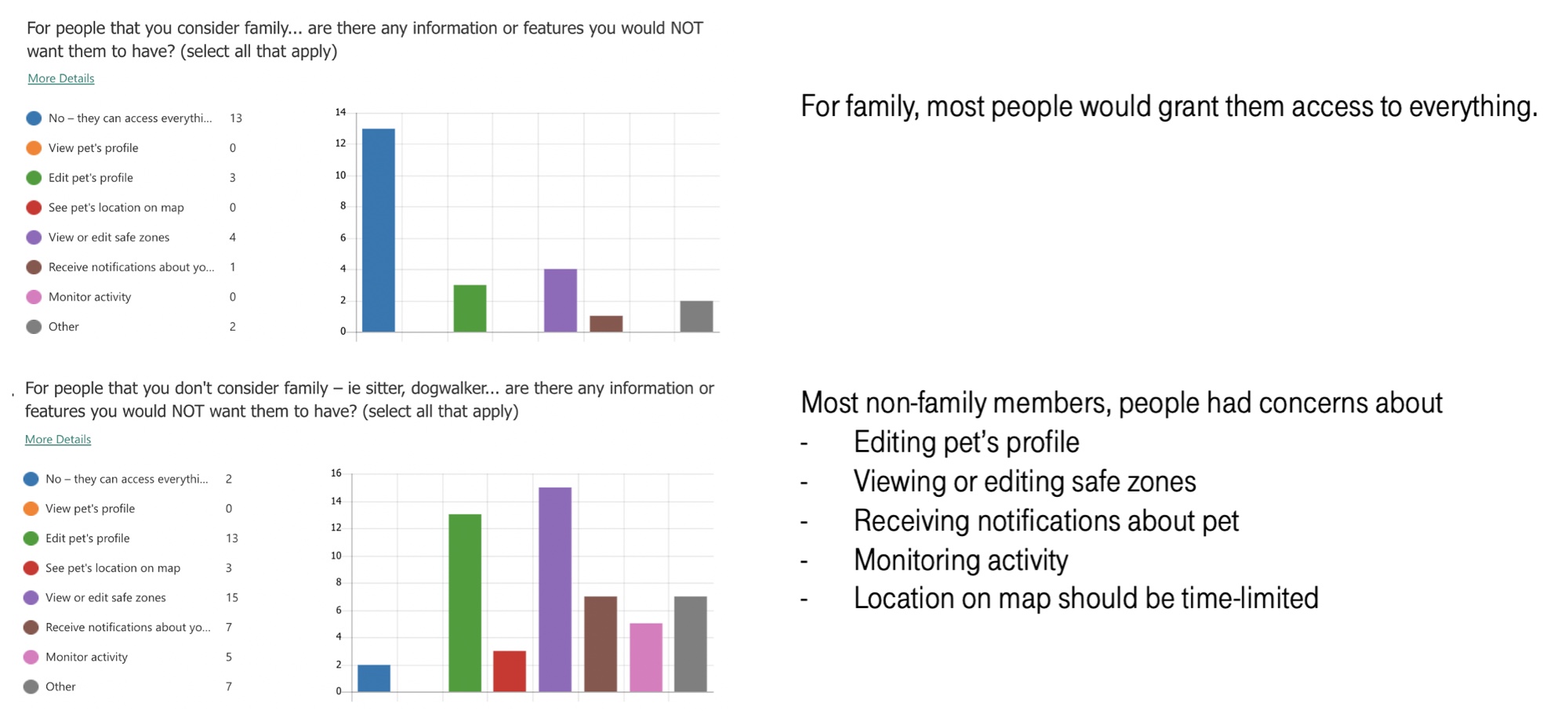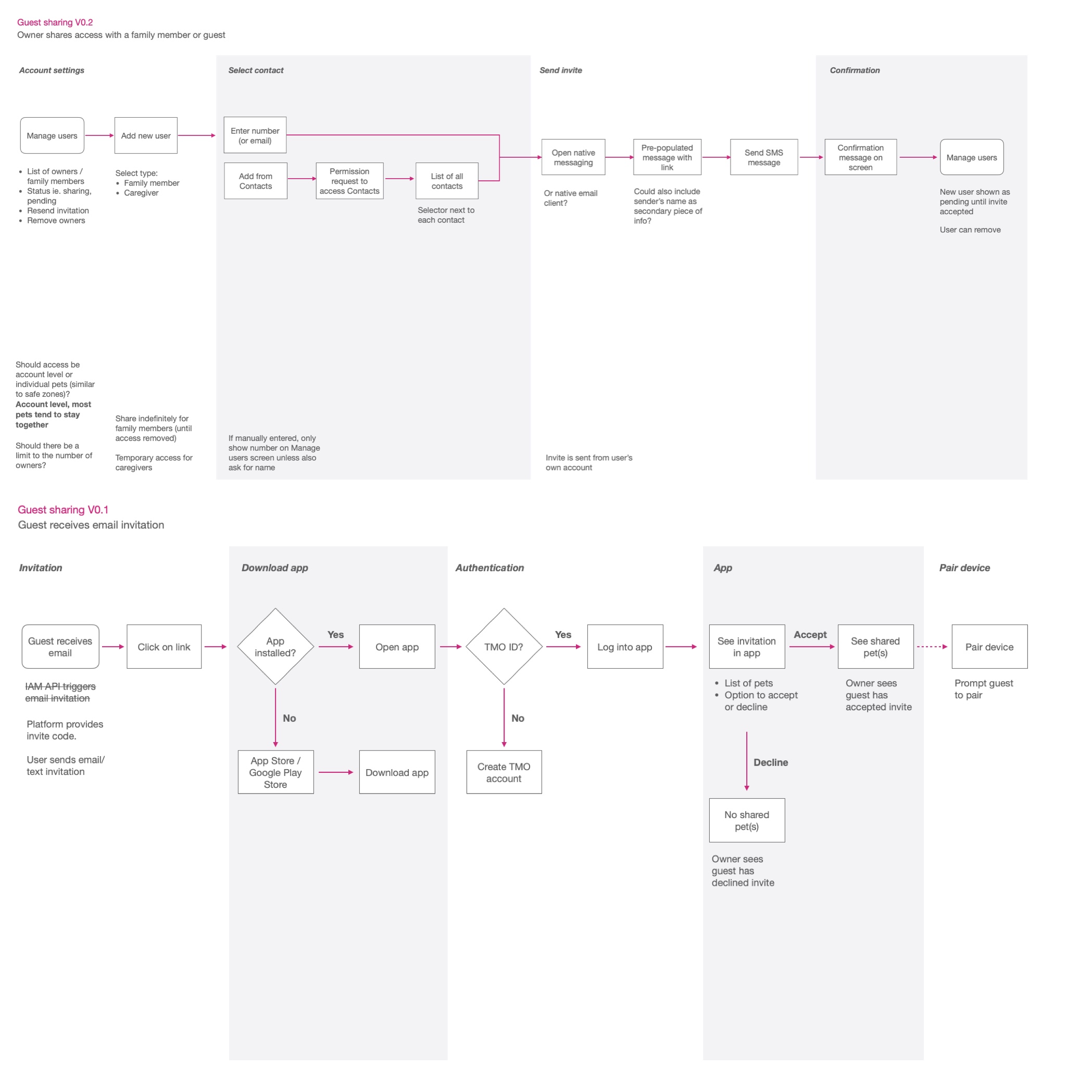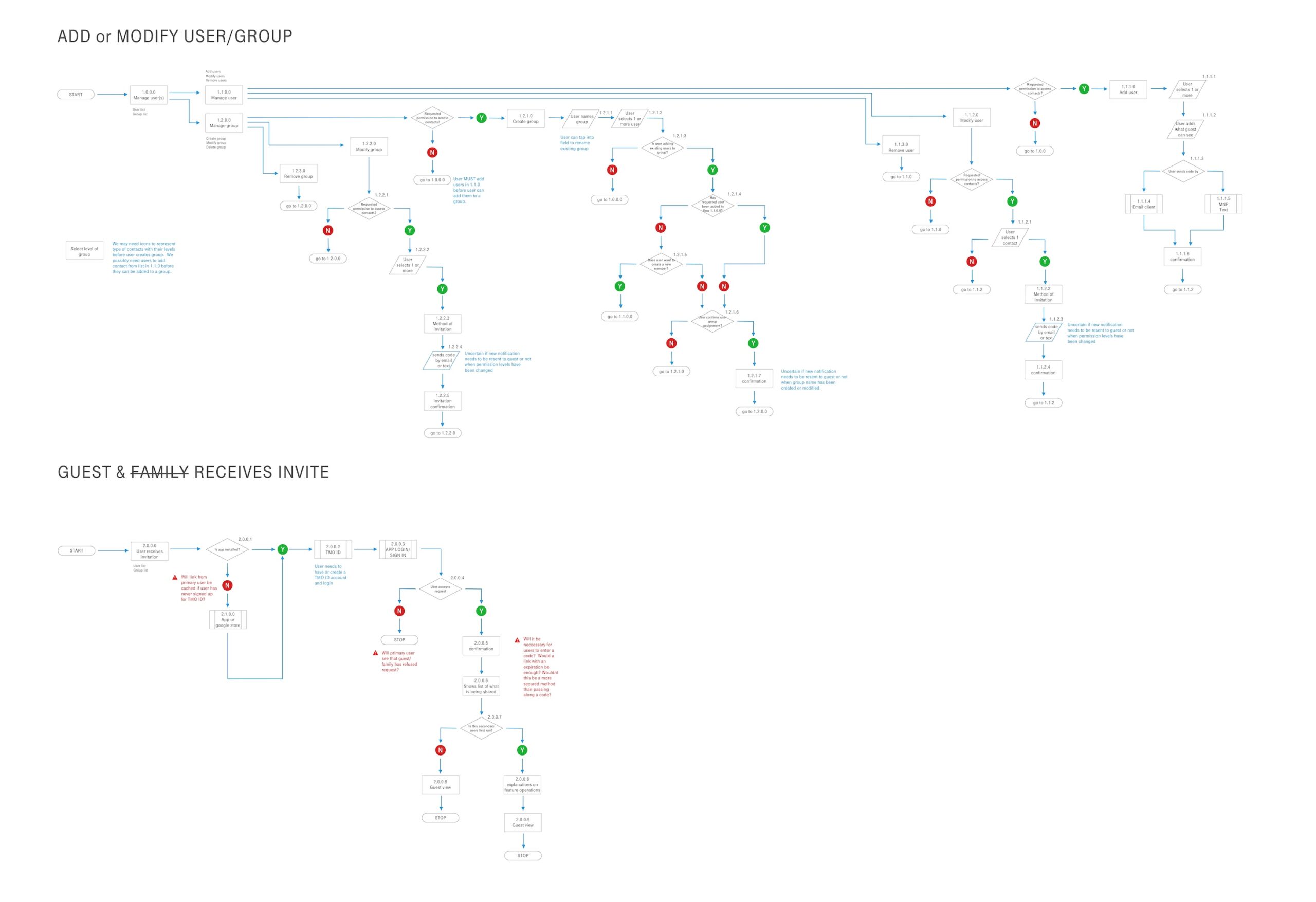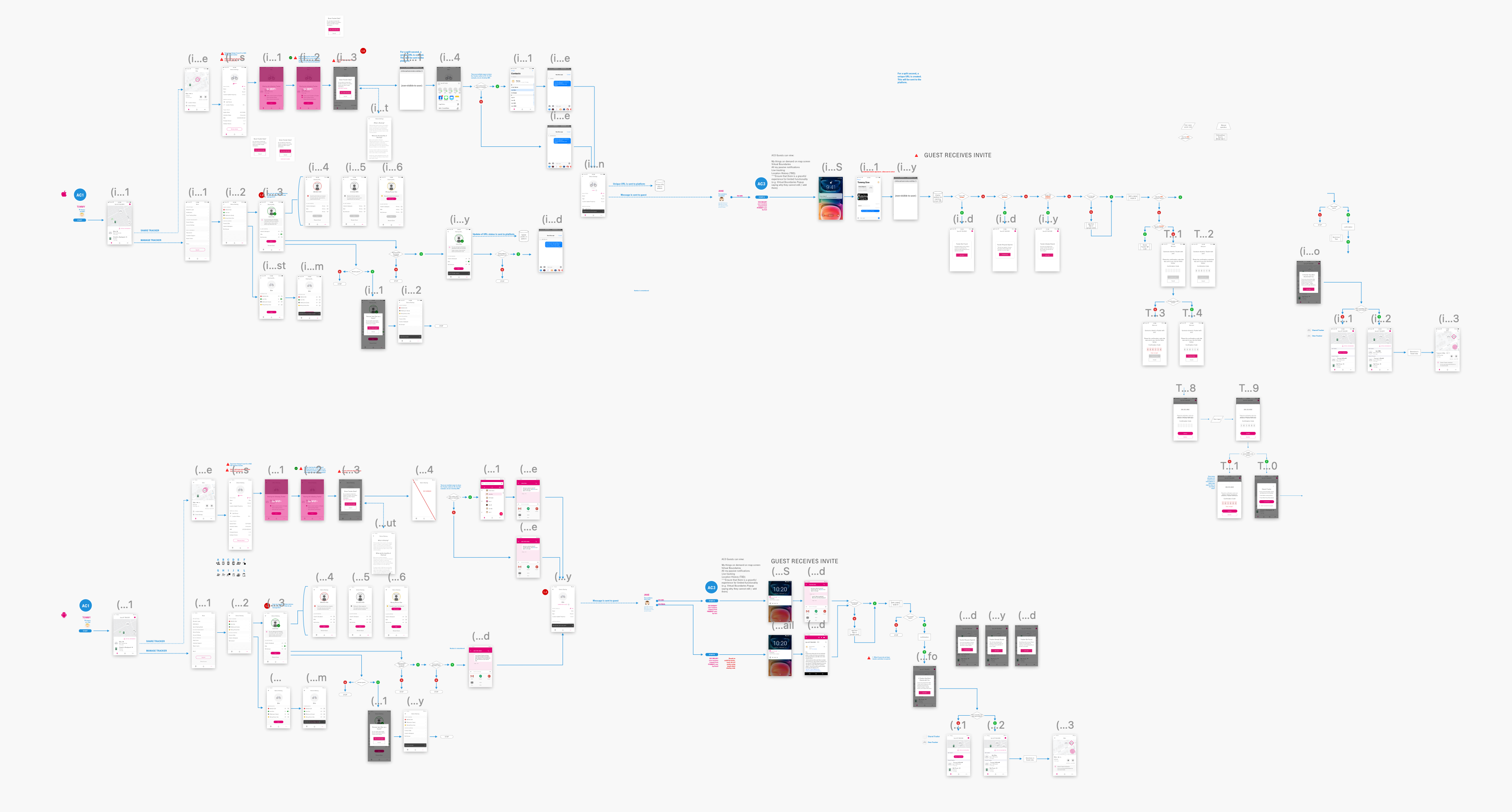Overview
T-Mobile SyncUP TRACKER is a blend of GPS technology, Wi-Fi, and T-Mobile’s expansive network to monitor what matters most to you. By placing this device to items such as your bike, luggage, backpack, or any other belongings, your items can be location almost instantly from nearly anywhere via Android or iPhone devices.
CHALLENGE(S)
Design aa flawless, secured experience where primary users are able to share controlled tracking data with a secondary user, ie spouse, partner, friend, or other trusted 3rd party member.
SOLUTION(S)
I was tasked with integrating two IoT products, “SyncUP Pets” and the “SyncUP Tracker” apps, our goal was to cater to two distinct user groups. To achieve this, we initially conducted usability studies prior to launching both products, which proved to be a time and effort-saving strategy. However, while this data was invaluable, we recognized the need for additional insights.
Our primary objective was to introduce a feature that would empower both user groups to share their tracker data with trusted third parties, such as spouses, partners, or family members. While this may have seemed straightforward in concept, we encountered a variety of complex issues and obstacles along the way, underscoring the importance of a meticulous and user-centered approach.
PRODUCT TEAM
Scrum Master: 1
Tech Product Managers: 1
Product Managers: 1
Engineers: 2
Developers: 2
Product Designers: 3
Junior Designers: 1
UX METRIC(S)
JTD
NPS (Net Promoter Score)
Benchmarking
Heuristic Eval
Competitive Analysis
User Interviews
My Role
My role for was to find a solution where an owner of an IoT tracker can share information to a trusted third-party user.
Research
With the limited data (both qualitative and quantitative), I needed to find out location information users felt comfortable to share. With the existing apps readily available on T-Mobile’s tracking repository and customer service feedback, I was able to validate my assumptions; majority of IoT trackers wanted to restrict some of the personal data such as Tracking History.

This is one of many surveys conducted to learn what users wanted their IoT tracker to do for them.
Execution - user flow I
Knowing the business requirements and learning what the users wanted for their IoT Tracker and how they would utilize it in their everyday life, I began designing two separate user flows; 1. the Primary User’s user flow and 2. the Secondary User’s user flow. These two user flows have two completely different user cases however, they both connected in several steps. At some point later in the process, they will connect however due to the complexities, I kept them separate in its early stage.

These are two separate flows; 1. the Primary User flow and 2. the Secondary User flow.
Execution - user flow II
Conversations, assumptions, doubts and learnings evolved between developers, engineers, leadership and design. We also had the VOC (Voice of Customer) join in to provide insight to what users thought on both existing trackers and what they hoped for. From this organic interaction, the user flow was modified several times to solve and compliment the user experience.

The two experiences evolved.
Execution - design I
After validating all concerns, which we were 60% confident knowing, I began to create the screens for iOS. There were still outstanding questions due to the complexity of the flow and engineering knowledge (I will share later below), however, we had to move forward with what information we had.

Moving forward with the information I had, I began designing the screens.

